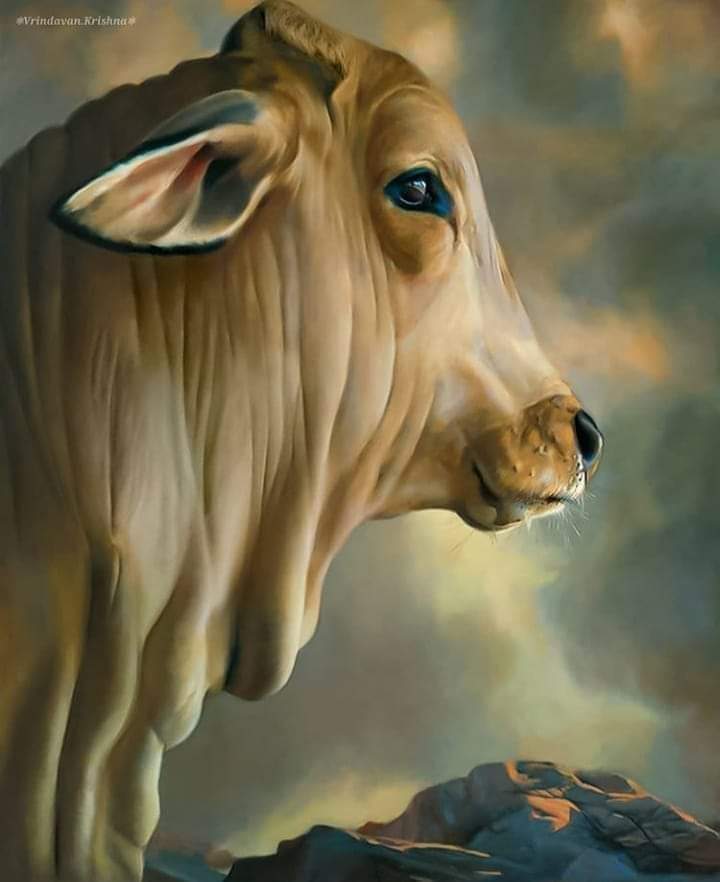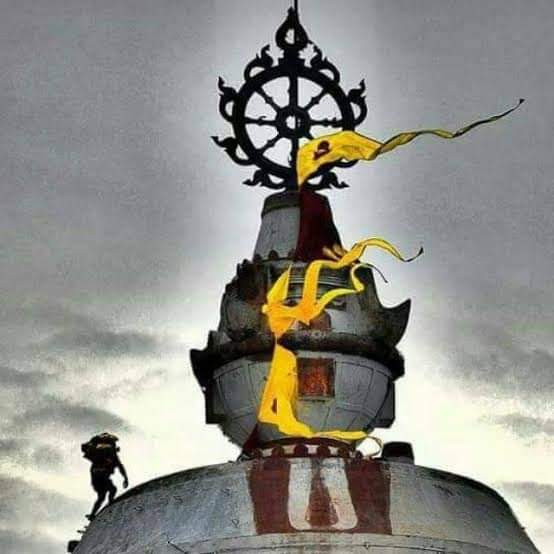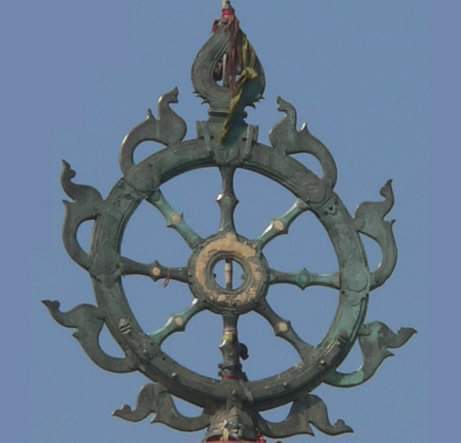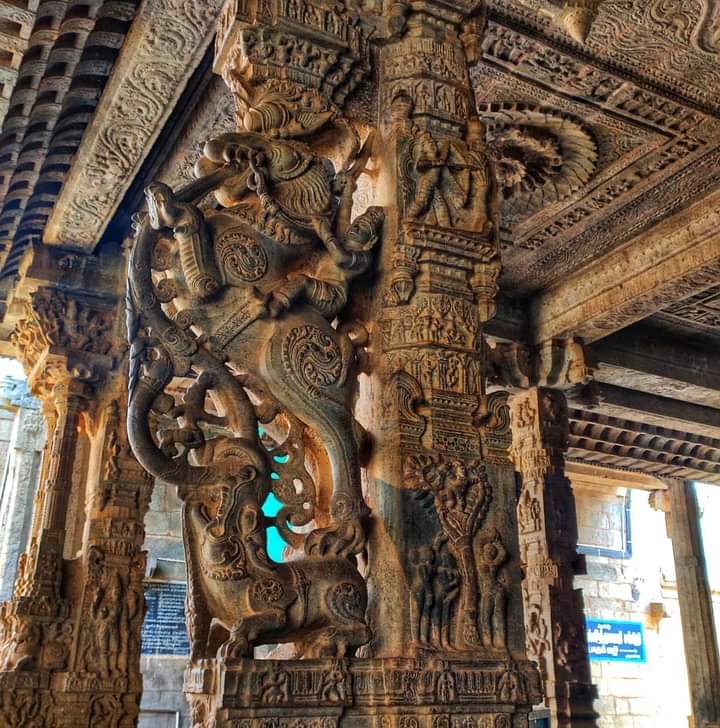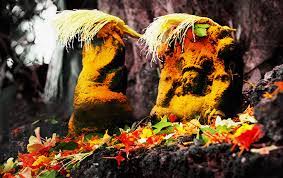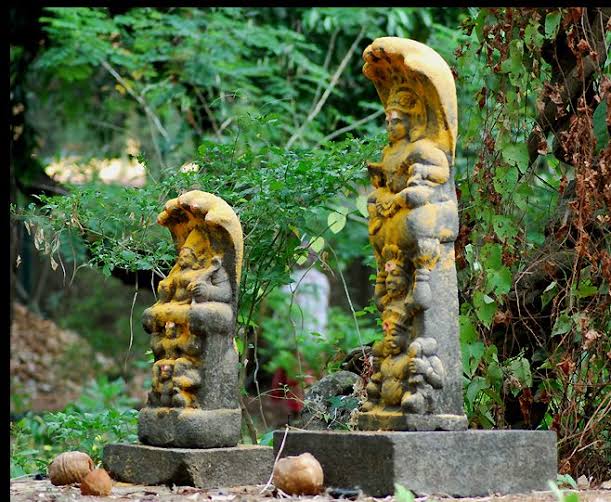2/n
Actually, in general, the term Azhwar is used to refer to even those Adiyaars who permanently reside in Sri Vaikuntam with Emperumaan. They are called Nithyasuris. Chakrathazhwar, Garudazhwar, Thiruvananthazhwan, Senapathi Azhwan and such names are quite common.
1/n
Namaskaram Madam. I have reading your tweets which sre very high in devotional aspect. A small doubt. Why is Guru Ramanujaya is not counted as Alwar. Please parron me if this is idiotic question.
— Sathya (@Sathyaganathe) January 10, 2021
2/n
3/n
In case of Swami Ramanujacharya, the purpose of His Avathara was not to reveal the 4000 Divya Prabandhas but to enhance the spread of those 4000 Divya Prabandhas and Their glories.
4/n
1. Swami Ramanuja is none but Swami Nammazhwar's Divine Feet and His Avathara is an extension of Swami Nammazhwar's Avathara.
5/n
6/n
7/n
Adiyen Ramanujadasi ☺️🙏
n/n
There are 2 kramams to count Azhwars:
— Ms K G Dhouhithri (@kgdhouhithri) January 10, 2021
Kramam # 1. In Upadesharathnamalai, Swami Manavala Mamunigal has identified only 10 Azhwars. Here, Andal & Madhurakavigal are not counted. https://t.co/cwi5drAidy pic.twitter.com/8PgQ9LMgfH
#SriBhavishyathacharyar was the very first name using which Swami Ramanuja was referred to i.e. the Acharya of the Future whose birth was already indicated by Swami Nammazhwar to both Sri Madhurakavigal & Sriman Nathamunigal.
More from Ms K G Dhouhithri
However, my concern is different, TBH.
Am even okay with all our infighting.
My problem is when we don't set those differences aside & join hands to face a common foe.
1/n
This is the problem with us. After all we fight among ourselves for Thengalai or Vadagalai Thiruman for temple elephants. https://t.co/kLvdZl25Ea
— Krish Sriram (@anavrittim) February 6, 2021
This maturity is not new to us - it has already been explained in the Mahabharatha!!
Yudhishtira tells his brothers to fight the Gandharvas & defend their cousins (Kaurava). This was *after* the game of dice, mark you.
2/n
When Bheema protested, Yudhishtira explains: "Between us & the Kauravas, we are 5, they are a hundred. In front of outsiders, however, we're a 105."
Sanathana Dharma has been there for time immemorial. It's natural that we have sects, unresolved disagreements, etc..
3/n
Abrahamics have sects for just a 2000-year existence. And they too bicker among themselves!!!
So, the real issue, IMHO, is forgetting to gather under our common identity.
4/n
If we try to silence voices or concerns of our internal sects for the sake of common unity, some people of the section that feels unheard may even shake hands with the very foe we're trying to vanquish. This is one of my greatest concerns.
5/n
More from Religion

Each thing is moved by, implicitly converted or turned back to, its own good by its cause of procession - which is principally God.
"Via est nobis tendendi in Deum." - St. Thomas Aquinas, which is to say that:
Christ, who as a man, is the way of our tending (back) into God.

Ezekiel 10:6 | When the LORD commanded the man in linen, “Take fire from among the wheels, from among the cherubim,” the man went in and stood beside a wheel.
"So I saw the glorious wheel move." - Dante, Paradiso 10.145

As Scripture and Dante see God's providence in circles, so did Boethius and Platonists more
Imagine a set of concentric circles. The inmost one comes closest to the simplicity of the centre, while forming itself a kind of centre around which revolve those which are set outside it. The circle furthest out rotates through a wider orbit.
— \u300e\U0001d622\U0001d633\U0001d633\U0001d636\U0001d634\u300f (@arrus_kacchi) December 26, 2020
Aquinas with, "Eadem est via qua descenditur et ascenditur." [SCG 4.1.3], brings back Heraclitus to the medievals, "The way up and the way down is the same." [Diels, B60]
The way up and the way down are the same.
You May Also Like
1. LWJ’s sword Bichen ‘is likely an abbreviation for the term 躲避红尘 (duǒ bì hóng chén), which can be translated as such: 躲避: shunning or hiding away from 红尘 (worldly affairs; which is a buddhist teaching.) (https://t.co/zF65W3roJe) (abbrev. TWX)
2. Sandu (三 毒), Jiang Cheng’s sword, refers to the three poisons (triviṣa) in Buddhism; desire (kāma-taṇhā), delusion (bhava-taṇhā) and hatred (vibhava-taṇhā).
These 3 poisons represent the roots of craving (tanha) and are the cause of Dukkha (suffering, pain) and thus result in rebirth.
Interesting that MXTX used this name for one of the characters who suffers, arguably, the worst of these three emotions.
3. The Qian kun purse “乾坤袋 (qián kūn dài) – can be called “Heaven and Earth” Pouch. In Buddhism, Maitreya (मैत्रेय) owns this to store items. It was believed that there was a mythical space inside the bag that could absorb the world.” (TWX)














